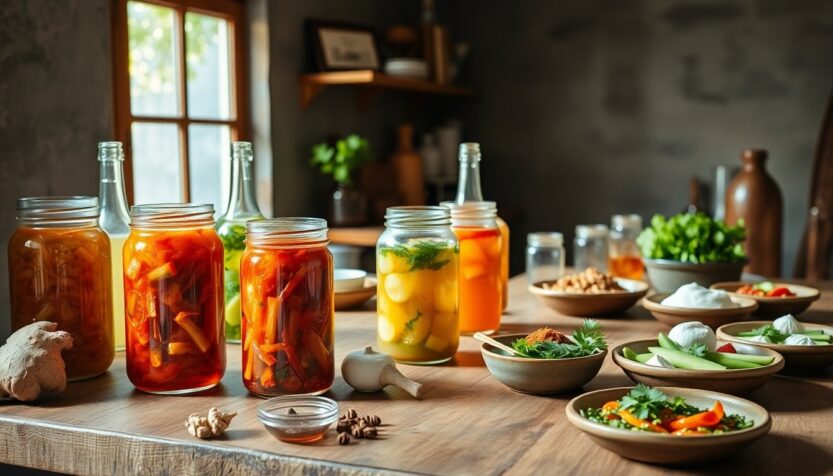The art of fermentation: a journey through flavors and traditions
The palate never lies. Consider the moment when you take a spoonful of creamy kimchi or a sip of crisp, tart kombucha. The dance of umami on your tongue creates a sensory experience that lingers long after the last bite. This is the essence of fermentation, a culinary technique that not only preserves but also enhances the natural flavors of ingredients. Behind every fermented dish, there is a rich tapestry of history and tradition that connects us to the land and its culinary heritage.
The story of fermentation
The palate never lies, and the world of fermentation offers a testament to this adage. This ancient practice, essential for food preservation before refrigeration, has been embraced by cultures worldwide. From the tangy pickles of Eastern Europe to the savory miso of Japan, fermentation showcases a rich tapestry of flavors and traditions.
Each region’s unique approach reflects its local ingredients and climate. For example, the terroir of a specific area significantly influences the final taste of fermented products. The microbial environment interacts with the food, creating distinct flavors that tell the story of a place and its people. Behind every dish, there’s a narrative waiting to be discovered, connecting us to the land and its heritage.
A technical glimpse into fermentation
Fermentation represents a remarkable interplay between bacteria and yeast. These microorganisms convert sugars into acids, gases, and alcohol, enhancing flavor and improving the nutritional profile of food. For instance, lactic acid bacteria contribute to the distinctive tang of yogurt and sauerkraut, offering beneficial probiotics that promote gut health. By grasping the science behind fermentation, home cooks are inspired to experiment and craft their own versions of these enduring dishes.
Connection to territory and tradition
Fermentation represents a celebration of sustainability and filiera corta, or short supply chains. Utilizing local produce supports farmers and reduces carbon footprints. In Italy, the tradition of fermenting vegetables has persisted for generations, with families passing down unique recipes and techniques. This enduring connection to tradition enriches the culinary landscape and fosters a sense of community.
An invitation to experience fermentation
As you delve into the world of fermentation, embrace the flavors and stories embedded in each dish. Consider making your own fermented vegetables or a simple sourdough bread. Allow your palate to guide you, for as I have learned, the palate never lies. Each bite is a journey through time and culture, reflecting the art of cooking that transcends generations.

